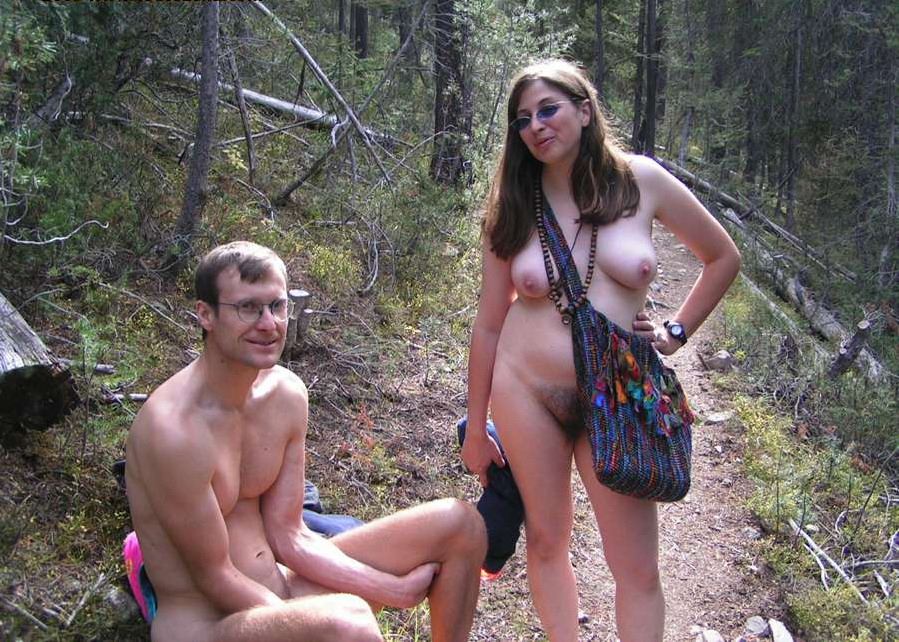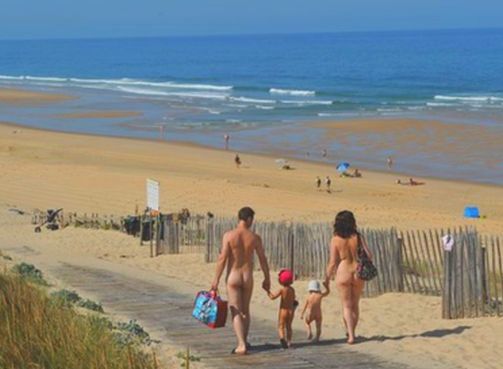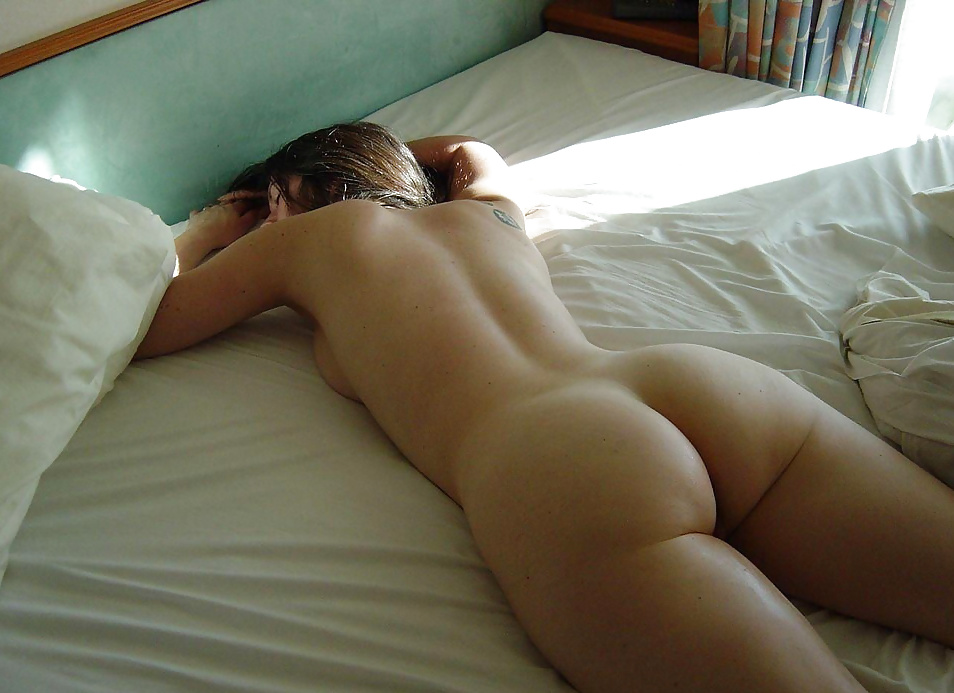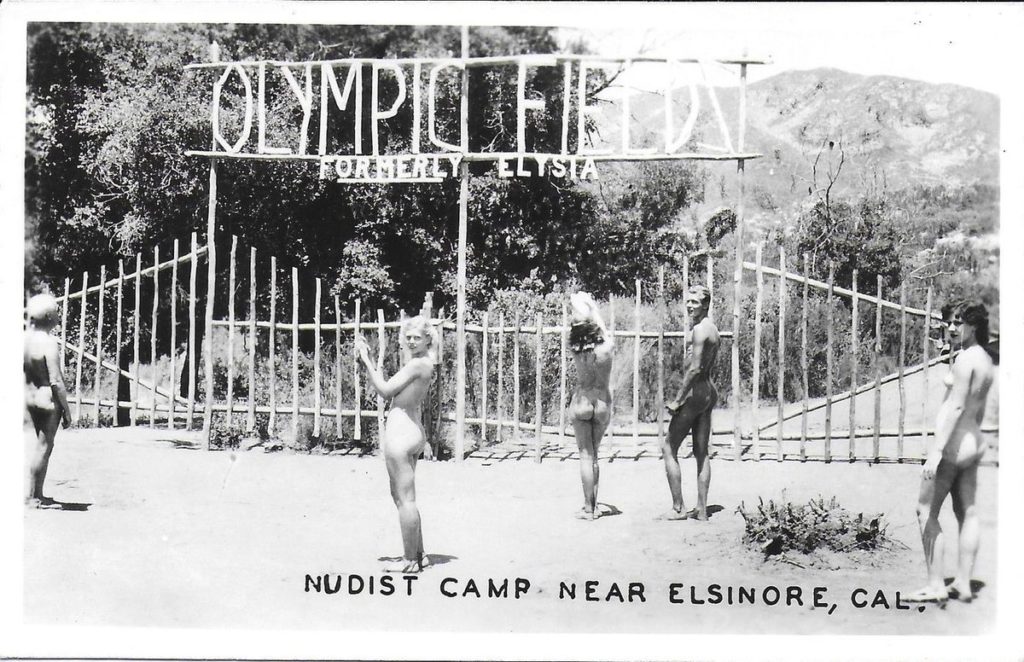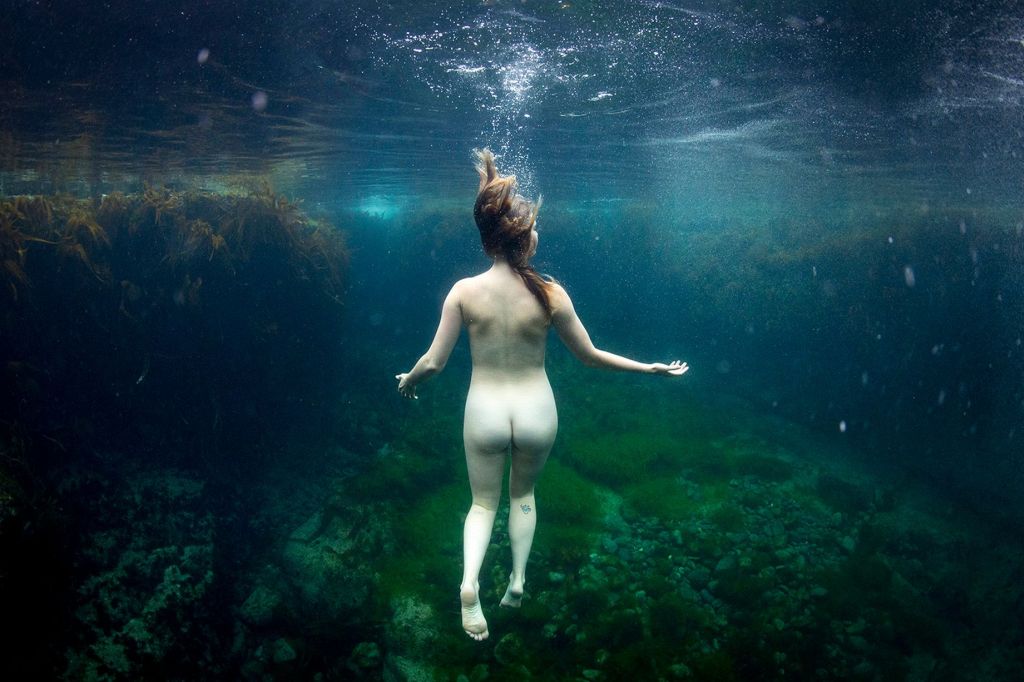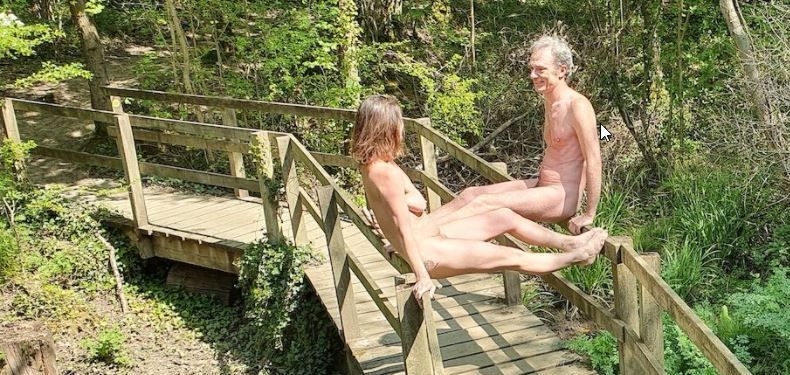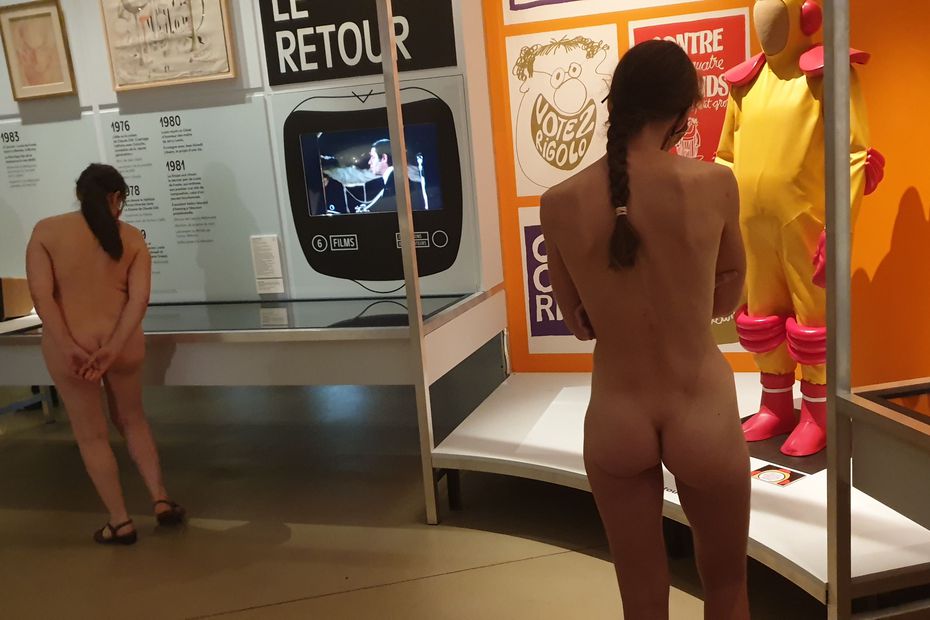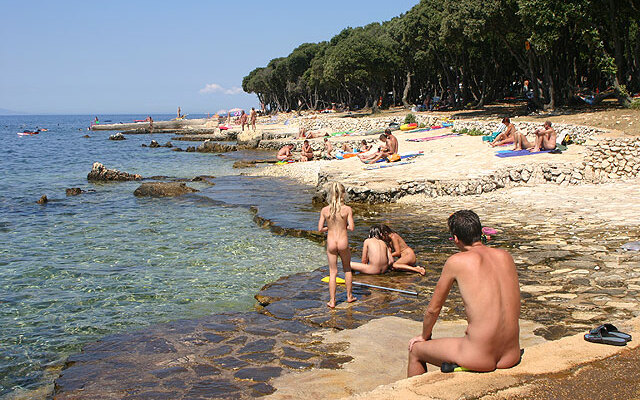Yeah, this is very late again. It’s only about June stories. Been a very hectic few months. Yet it still seems worthwhile to make note of some of the most interesting stories from June. Of course, it can’t be considered “news”, but I try to select articles that won’t soon cease being interesting. This is what’s called “history”, right?
- Meet Nudists: How to Make Friends In a Niche Community
Is it difficult to find naturist friends? No, not necessarily. Most naturists are open, friendly folks. If you’re an outgoing, extroverted person, making naturist friends should be quite easy. If you’re more introverted, it’s naturally not quite as easy. But when you’re naked with others, there’s a shared sense of both vulnerability and openness that can significantly enhance the possibility of forming friendships.
Even if you’re a newcomer at most naturist clubs and resorts, you’ll probably notice that many or most others will smile and wave as you walk around or sit by your tent or camper. That’s a good sign you might start a conversation on the spot. Perhaps you’ll see that someone is carrying sporting equipment, walking a dog, has interesting tattoos, or in some other way provides an opening to start a conversation.
Don’t be shy about it, if there’s any indication the other person shares an interest of yours – in addition to naturism. Enjoying nudity is a very significant characteristic common to just about everyone around – plenty of incentive to discover other shared interests that can be a basis for friendship.
Besides a naturist club or resort, a clothing-optional beach is the other main place you might be in the company of many folks enjoying nudity. But there are significant differences you should keep in mind. In particular, many people visit a beach just for enjoying the sunshine and the water, and not for socializing.
Many people at a clothing-optional beach may have little or no experience being naked around others, so they’ll probably be nervous and wary of being approached by naked strangers. In this situation, if you’re already fairly comfortable being naked it may be best to let others approach you, or to watch for positive signs that others are comfortable with having a conversation.
One idea you could try is to bring extra snacks and cold beverages to the beach. If you see others who appear to be friendly and approachable, offer to share some! Sharing food is a very ancient human bonding experience. The same idea would work at naturist campgrounds and parks too, of course. Get creative.
The article cited here offers a lot of good thoughts about finding naturist friends, and it deals not only with the “real-life” environment (which is certainly the most satisfying one), but also the online environment as well. The latter case can be tricky, since you can’t be quite as confident about the dedication of others to the principles of “real” naturism. On the other hand, online is certainly a good way to make initial contacts with people who’re happy to discuss naturism. And if they happen not to live at a great distance from you, meeting in “real life” will be that much easier.
Here are some other good articles on making naturist friends:
- A scientific experimental study finds that nudity helps improve body acceptance

“It’s official – nakedness leads to improvements in body image!”, a British Naturism post in June proclaimed. The post contains a summary of the research, in which “51 participants arrived for the experiment, half of whom spent 45 minutes socialising with clothes on (the control group), the other half doing the same naked.”
After a description of the experiment, it’s reported that “The participants were all happy to engage in the experiment once they were given their instructions, whether naked or clothed. And there were no differences in the responses between men and women or between different age ranges.”
The post announced a study conducted Dr. Keon West (Twitter), a Reader in Social Psychology in the Psychology departement of Goldsmiths University in London. It’s entitled I Feel Better Naked: Communal Naked Activity Increases Body Appreciation by Reducing Social Physique Anxiety
From the abstract:
“Positive body image predicts several measures of happiness, well-being, and sexual functioning. Prior research has suggested a link between communal naked activity and positive body image, but has thus far not clarified either the direction or mechanisms of this relationship. This was the first randomized controlled trial of the effects of nakedness on body image. … This research provides initial evidence that naked activity can lead to improvements in body image”
Although the research article is behind a paywall, there’s a little more about it here. A related paper, entitled “A nudity-based intervention to improve body image, self-esteem, and life satisfaction” is still in press, but is described here.
An earlier study from Dr. West, entitled Naked and Unashamed: Investigations and Applications of the Effects of Naturist Activities on Body Image, Self-Esteem, and Life Satisfaction, was published in the Journal of Happiness Studies in January 2017.
Quoting from the abstract of that paper,
“It was found that more participation in naturist activities predicted greater life satisfaction—a relationship that was mediated by more positive body image, and higher self-esteem (Study 1). Applying these findings, it was found that participation in actual naturist activities led to an increase in life satisfaction, an effect that was also mediated by improvements in body image and self-esteem (Studies 2 and 3).”
A January 2017 British Naturism post quickly announced that research, summarizing it as “Science proves Naturism is good for you”. That post contains a brief video (containing clips from a London World Naked Bike Ride). A Goldsmiths press release says Research finds nudism makes us happier. Felicity’s Blog provides many details: New Research Shows That Naturism Improves Body Image & Happiness.
That research got a considerable amount of media coverage, such as:
- International Nude Day

Well, it’s not exactly a well-known holiday, perhaps not even to most naturists. But there really is an “International Nude Day”, which is always July 14, and it is recognized by several online sites that record “special” days. For example: here, here, here, here, and here. However, it’s not always taken very seriously at such places. A few other sites looking for “interesting” material, such as this, also take note of the day.
Naturally, because summer in the northern hemisphere is vacation time for most people and the best time to be naked outdoors, the whole month of July deserves to be considered a National/International Nude Month.
The idea apparently originated in New Zealand, even though July 14 is smack in the middle of winter down there. (This Rock Haven Lodge page gives the year as 2003.) Nevertheless, a NZ site should be a reliable source:
“New Zealand’s (and now the world’s) National Nude day is not a public holiday but a day to celebrate the human form.
Brain child of former All Black and TV presenter Marc Ellis, National Nude Day (also now known as International Nude Day) is a celebration of the skin with much fun attached. ….
Nude Day is a one day a year that all in NZ can celebrate nudeness, nakedness, being in the nuddy, running free in all your original raw beauty, putting on your best birthday suit. It’s day everyone can participate in, fat, skinny, big, small, firm, soft and the flabby can all get involved.”
There are a couple of other things in early July with the same idea: International Skinny Dip Day, promoted by the American Association for Nude Recreation (second Saturday in July), and Nude Recreation Week (the week after July 4), which was promoted by The Naturist Society.
It doesn’t seem like many naturist organizations promote the day very much, if at all. Few naturist blogs mention it either, although the Sesual Nudist has a good post. Alexis remarks: “Having a holiday, even if unofficial, to encourage and support nudity is along the path to normalizing naturism, and I certainly think we should do what we can to push this along. Who knows, maybe we can get it more widely recognized as a holiday…wouldn’t that be nice?!?”
Yes, it certainly would be nice. That’s a very good point. If the date were much more widely promoted by naturist organizations and businesses catering to naturists, there would be a natural opportunity to bring naturist ideas to a wide audience, provided it’s taken seriously enough.
But you don’t have to wait for some organization to take the initiative. You can do it yourself! If you have open-minded friends with whom you haven’t yet have discussed your interest in social nudity, this special day would be the perfect occasion to let them know. If there are other friends who already know, also invite them along for a visit in the afternoon or evening, especially if you have a swimming pool or spa. Provide plenty of snacks or have a cookout. And make it clear that you plan to be clothesfree (but nobody else need do likewise, of course). If you already have friends nearby who enjoy nudity, be sure to invite them too.
When we get around to dealing with naturist articles for July, it will be interesting to see just how much attention centers on July 14 (and related days).
- Florida has another official clothing-optional beach

We noted back in January that the East coast of Florida was on track to get another clothing-optional beach, about halfway between portions of the Canaveral National Seashore to the north and Haulover Beach in Miami to the south. Almost 6 months later that became a reality.
A section of Blind Creek Beach, near Fort Pierce, has been unofficially clothing-optional for more than 20 years – possibly as long as 50 years. But a 4-1 vote by the County Council on June 2 made 36 acres of the beach officially clothing-optional. That status has been generally accepted by locals for much of the preceding two decades, so the main difference will be that signs will be posted to alert visitors who might be unaware that there could be naked people on the beach, restrooms would be provided, and (perhaps) lifeguards might even be hired.
What’s taken so long for this development? In recent times it hasn’t been local opposition to nudity so much as the need for the county to spend a little bit of money on the restrooms. The Florida economy is very dependent on tourism. If local naturists could just put in enough effort to inform the public of the value of naturist visitors, there’s still plenty of beach space in Florida that’s not yet clothing-optional. The American Association for Nude Recreation has a report on this very topic: The Economic Impact of Nude Tourism & Recreation in Florida. Other states that already have significant naturist destinations should also take note.
News articles:
- Naturism during a pandemic

In June the pandemic seemed to be winding down. (Ha!) So some naturist resorts in Europe, North America, and elsewhere started opening up, but usually making a good effort to observe sensible safety guidelines. Many naturists chose other ways to enjoy nudity safely.
Here are a few reports:
- Naturism in Ireland is Alive and Well

A small number of European countries are known for having a fair number of places for naturists, such as clothing-optional beaches, campgrounds, resorts, swimming centers, spas, and guest houses. France, Spain, Portugal, Germany, Croatia, and even England, are names that quickly come to mind. But … Ireland? Apparently it should be in that list too.
The Irish Naturist Association has recently been actively pursuing this idea – for much the same reason that applies to Florida: naturist facilities attract naturist tourists to spend money locally. It’s also helped a lot that, as the article notes, “In the past twenty to thirty years Ireland has become a much more open minded and culturally diverse society. As part of the ongoing liberal attitudes new laws were passed by parliament in 2017 which now make being naked in public no longer illegal or a prosecutable offence.” The U. S. should be so fortunate, but sadly (in most states), it’s still in the dark ages, at least as far as public nudity is concerned.
Ireland’s enlightened attitude shouldn’t be so surprising, since a similar liberalization has occurred during the same period in England – Ireland’s close neighbor. Not only do the two countries share a similar climate, but there are cultural similarities as well. Ireland (except for Northern Ireland) achieved complete independence from Britain in 1921. But for centuries Ireland had long been dominated by its neighbor. So people could move between the two islands without much trouble. And English is very widely spoken in Ireland, as well as the native Irish.
The Irish Naturist Association has actually existed since 1963. So organized naturism in Ireland does have close to a 60-year history. The article points out that “many more [people] are accepting of and taking part in naturism in Ireland. Indoor facilities, swimming pools, saunas, Yoga/meditation retreats and other such facilities” book naked events. And outdoors, “naturists also make use of traditional known naturist used beaches and outdoor swimming areas. Currently there are some thirty-three documented beaches in the Republic of Ireland.”
- Naturist Bed & Breakfast with Winery
Speaking of places where it might be surprising to find good places to be naked – as well as a thriving winery – how about Oklahoma? Not everyone’s idea of an idyllic place for naturism, shall we say?
But, as naturist author/blogger Will Forest writes in a review of the Wakefield Country Inn and Winery, it’s “really three favorite things” that “combines (1) a bed & breakfast and (2) a winery with (3) a naturist philosophy.” The establishment describes itself on its (non-naturist) website:
“We are an adults-only (must be 21) bed and breakfast (it is our home, not a hotel) and winery, located in southeastern Oklahoma, between Ada and McAlester off Highway 75. If you’re looking for solitude, peace and quiet, we are located on 50 acres and our closest neighbor is 1/2 mile away. … The sole purpose of our bed and breakfast is for couples to re-connect/re-kindle the romance in their relationship.”
Here’s the reviewer’s conclusion:
“A summary for this fantastic three-in-one destination: (1) The bed & breakfast is terrific, and the facilities are beautiful. (2) The winery is wonderful and the wines are outstanding. (3) It’s the people -the owners, the guests – who really bring this lovely establishment to life and who espouse the naturist philosophy. The owners know that their home business has become a gateway for many who are curious about social nudism, and who try it for the first time right there.”
It seems to me that establishments like this – small and run by real naturists who love social nudity – may be the future of naturism. Provided they are numerous enough for nearby naturists to visit easily. In the U. S. (outside of Florida, at least) larger naturist facilities are probably going to be few and far between for some time to come. They’re expensive to start and operate. And in many parts of the country, they may be viable only if located in areas that are already close to popular tourist destinations.





